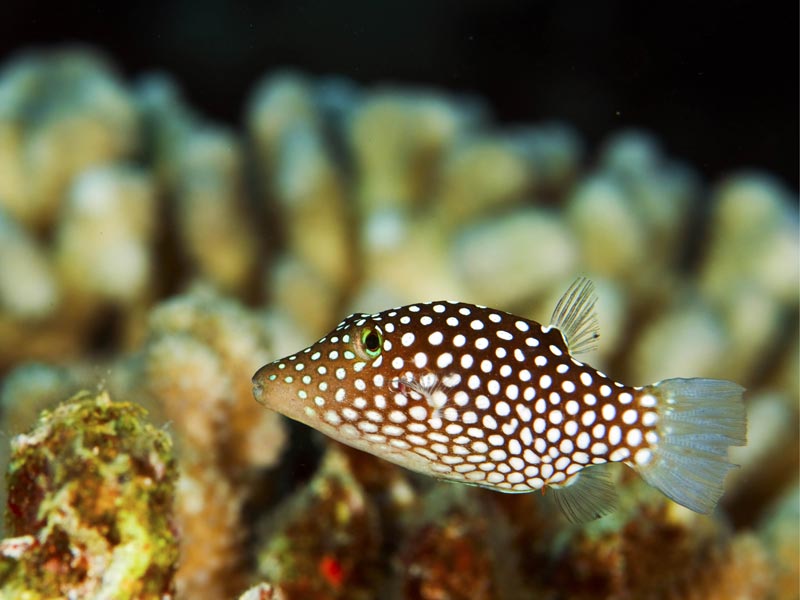Hawaiian Whitespotted Toby
Canthigaster jactator
Pufferfish have bristly skins, and when they are disturbed, distend themselves with water into prickly balloons. This discourages the attack and makes it difficult or impossible to swallow them. If they are removed from the water, they inflate with air and make little croaking noises. These fish are also poisonous. Tobies secrete a substance from their skin making them immediately unappetizing to predators. Most of these fish also accumulate in their internal organs and in other parts of their bodies a poison called tetrodotoxin. This is one of the most powerful neurotoxins known, and is deadly to humans. In Japan, these fish are considered delicacies, but must be prepared by licensed fugu chefs. Puffers have chunky, short bodies that do not have scales or pelvic fins. They are not the strongest swimmers, but they still roam freely over the reef. They are able to eat almost anything that doesn't swim away with their sharp beaks and powerful jaws. There are 12 pufferfish species in Hawai'i.
The Hawaiian Whitespotted Toby is the most common Hawaiian tobies, and are characterized by the white spots covering their bodies. They often display a slight green fluorescence. These tobies are usually seen in pairs. Occasionally they have irregular black marks on the snout and body. Their species names means "boaster," or "braggart", even though they are shy by nature. They grow up to 3.5 inches.
